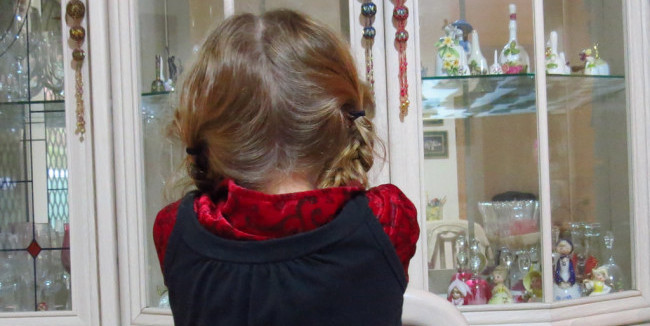 When an anxious child screams, breaks things or otherwise throws a full-blown tantrum, many parents may immediately call for a “timeout” until things cool down. Timeouts typically involve sending the child into the bedroom, the corner or some other out-of-the-way place for a set period. While the timeout may sound great in theory, in reality it may do harm than good.
When an anxious child screams, breaks things or otherwise throws a full-blown tantrum, many parents may immediately call for a “timeout” until things cool down. Timeouts typically involve sending the child into the bedroom, the corner or some other out-of-the-way place for a set period. While the timeout may sound great in theory, in reality it may do harm than good.
Theory: What Parents Hope Will Happen
- Anxious child acts out.
- Child gets sent for timeout.
- Child sits quietly, calming down and reflecting on misbehavior.
- Child recognizes how actions could have been more appropriate.
- Child incorporates this new behavior into future scenarios.
- Child emerges from timeout enlightened, serene, devoid of anxiety and apologetic.
Realty: What Really Happens
- Anxious child acts out.
- Child gets sent for timeout.
- Child, in total isolation, becomes angrier and completely unable to control emotions.
- Child unable to calm down, reflect or do any type of rational thinking.
- Child instead focuses on how awful parents are for shutting him or her away.
- Child emerges from timeout disgruntled, upset, riddled with even greater anxiety and resentful at parents for inflicting such punishment.
What Else Happens
In addition to potentially increasing a child’s anxiety, resentment and ire, timeouts can also serve as an indication that parents are at their wits’ end. Sending a child off into isolation can be an unintentional signal that the parents are:
- Unable to contain their own emotions
- Overwhelmed by their negative response to their anxious child’s behavior, whether they’re embarrassed, angered or distressed
- Too distraught to take any other type of action
- Near the breaking point and about to explode
Timeouts additionally send the message to children that, when things get tough or emotions run rampant, they should isolate themselves from the problem and the rest of the world.
Even more disturbing is what happens to the brain when children are shuttered away in a timeout. Timeouts are a period of isolation, and isolation is not what children instinctually need after they make a mistake or misbehave.
In times of distress, anxious children have a deep need for connection, not rejection. The experience of being rejected causes relational pain, which imaging of brain activity has shown looks incredibly similar to the experience of physical pain.
The bottom line: repeated incidents of isolation may affect the brain the same way as repeated acts of physical abuse. Neither punishment is recommended, especially for an anxious child.
What to do Instead
Even if timeouts are not designed to be a punishment, they clearly end up that way. Punishment and discipline are two different concepts. The former promotes suffering. The latter promotes teaching children how to change their behaviors and develop the skills to do so.
Instead of a timeout the next time the need for discipline crops up, parents can try making a connection with the child. Rather than making a child sit alone in isolation, sit with your child to talk about what’s bothering him or her.
Acting out is often a cry for help, something children end up doing when they need help calming down. Misbehavior may be the result of overtaxed emotions, emotions an anxious child has not yet learned to regulate.
Sitting quietly with the anxious child, comforting, soothing and discussing the behavior can be much more effective move than sending him or her off into a timeout. Not only can it be more effective, but it can be more rewarding for you both.
SOURCES:





